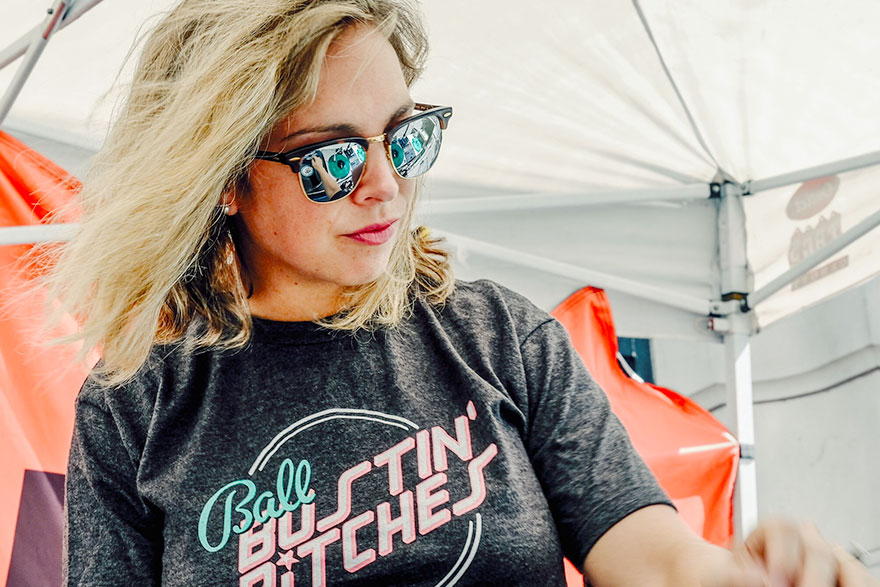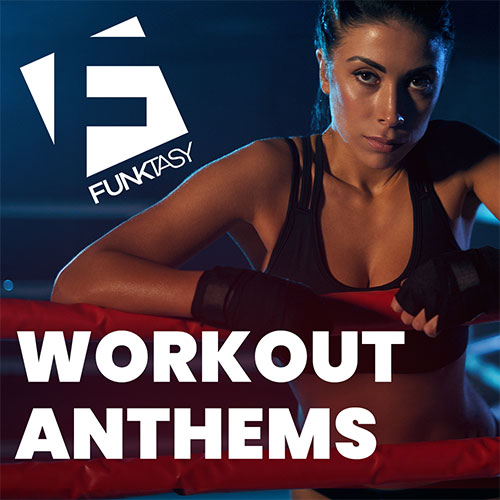In this Funktasy Spotlight, DJ Killa-Jewel talks about the battles of a unique turntablist. A 25-year veteran of the underground hip-hop scene and turntablist community, DJ Killa-Jewel has rocked the decks across Canada, the U.S., Europe, Asia, and Australia at some of the most prestigious clubs, concerts, and festivals to date. Well known for her collaboration with Thud Rumble’s DJ Q-Bert in his ‘Do It Yourself Vol. 2’ DVD, Killa-Jewel’s participation in numerous DJ battles including the Canadian DMCs, ITF Scratching Categories (NYC), the World Vestax Extraveganza (Japan), and the Red Bull Thre3Style Canadian Finals (Calgary) solidified her place amongst the best in the industry, and has propelled her to the top of her class. Trained in classical music, she spent years fusing Hip-Hop with the theatre milieu by composing “turntable music” live for theatrical productions.
What is the daily routine for DJ Killa-Jewel?
The daily routine is pretty laid-back, but pretty structured. I wake up, eat breakfast, walk the dog, then jump into the studio pretty much until the end of the work day. I always end the day by hitting up my CrossFit class. It’s an amazing stress reliever after 8 hours in front of the computer.
Can you tell us about your musical journey, how you started and where you are today?
I’ve been a DJ for the last 25 years, and producing more seriously over the last 15. I also took classical piano for 10 years before I got into DJing. This gave me a good understanding of music theory which, in my opinion, made the transition into mixing and scratching easier to grasp. I’ve definitely had some pretty crazy opportunities and life experiences over the span of my career, not only as a DJ, but as a music producer. I’ve competed in a handful of DJ battles, performed with different hip-hop, rock, pop and jazz bands, travelled the world in a theater production, scored for television and video games, and (following the unofficial release of my first LP, ‘Saudade’), last summer released my debut EP, ‘Reckless’. This last year has taken the most surreal and unexpected twist. As far as my productivity during the pandemic has gone, I feel extremely fortunate for the time it’s given me to focus on next moves, and to figure out how to take my music and career to the next level. I would never have imagined that during this time I would have landed a DJ gig on Tele Quebec’s ‘La fin des faibles’, forged a solid partnership with the very talented guitarist/singer/songwriter Patrick Krief, and signed my first record deal with Hydrophonik/Indica, with whom I’ll be releasing my next EP, “Sagittarius”, this summer.
You have performed at many international scratch competitions. Can you tell us about your experience?
My life as a battle DJ is now a part of my past. When I look back on all those experiences, I am truly thankful for all of them, as each one was an opportunity to learn something new and to develop and perfect my skills as a turntablist. I would encourage anyone getting into turntablism to enter a DJ battle just to experience the challenge of growth and also that sense of accomplishment. Personally, after years in the battle scene, I realized that my passions were shifting, and I no longer felt like DJing (in general) was enough of a challenge for me. I no longer had the same drive to compete, nor did I have the interest or the ego required to continue to be a battle DJ. My heart wasn’t in it anymore. I wanted something more out of music, and I didn’t want the entire success of my career to rest solely in the hands of a panel of (often-biased) judges. Not after working so hard to put myself out there. The payoff just didn’t seem worth it. Only now, as a music artist, do I truly see a path forward, and I’m really excited for the future.
How did your entry into the theatre world come about?
There was a phone call, someone asked if DJ Killa-Jewel was there. I replied “this is she”, and the rest is history. It was quite unbelievable actually. I didn’t know who Robert Lepage was at the time. But I was asked if I was available to come to Quebec City for a two-week rehearsal of a show called ‘Zulu Time’. When I finally arrived, I entered a rehearsal space that looked like it could have been a scene out of Cirque du Soleil. I was in awe and disbelief at how grand this production was. Next thing I knew I was sitting at the same table as Peter Gabriel who happened to be the co-producer. We were supposed to tour the world with this show, next stop being in NYC. But the morning I was packing my bags to leave for Broadway, I turned on the TV only to find the twin towers coming down. I knew I wasn’t getting on the plane that day, or for the next long while. We did end up performing a month long run here in Montreal, but that was the end of Zulu Time. Luckily not too long after, I ended up getting a call from Robert asking if I would be interested in playing the part of “Polly” in the Beggar’s Opera (what later turned into ‘The Busker’s Opera’) and we toured the good part of 6 years with that show. I will never forget the relationships I made with the cast and crew, and the experiences I had on the road all those years. My record, “Saudade”, was conceived of during those travels.
Elaborate on your approach to your unique style of turntablism.
I have what most turntablists might call an old(er) school style a scratching. A lot of the scratches I like to incorporate in my lexicon are open fader scratches (scratches that start with the crossfader open) like chirps and flares. During my formative years, I was heavily influenced by DJ Qbert and a lot of the advanced techniques he was using at the time were either using two hands on the record, or up fader volume fades. My style incorporates a lot of these types of movements, and I also find they get the most audience reaction. In terms of using turntablism in my music production, I’ve always tried to incorporate scratching in not only a rhythmic way, but in a musical way as well. DJs like Kid Koala and DJ Mana inspired me most in the way they used the turntable as a musical instrument, and not solely as an instrument that just plays music.
Tell us about your creation and production method. Do you work in the box/analog/hybrid?
‘Saudade’ was produced entirely on an Akai MPC 2000, then later tracked to Pro Tools for mixdown. Although I do occasionally use external instruments such as my Subsequent 37, or electric guitar or drums, for the most part I am a self-taught Ableton Live girl, and this is where all of my creation now takes place. I really do miss sampling records more than I like to admit, and as a hip-hop DJ/producer, that was the real deal. But in a world where copyright infringement is taken so seriously, I could no longer risk it. So, the short answer to your question is, hybrid!
Is there a music genre that you stay away from when mixing? If so, why?
Before I got into hip-hop, I collected techno, house, and drum n bass (this was before there was any such thing as Serato). I then became an underground/old school hip-hop music purist. Why? Because I was young and stupid, and I thought I was right. When digital DJ interfaces started to emerge, I also used to be a vinyl purist too. But staying a purist wasn’t doing me any favours. It’s so obvious to me now, the more genres you play, the more fun you and your audience are going to have, the more interesting your DJ sets become, and the more creative you can get. Any genre of music is fair game to me now. I hate on nothing, and I use everything!

How has your DJ setup evolved in the digital age?
The biggest change for me (outside of the most obvious move to Serato), was going from an analog to a digital mixer. When I first started seeing DJs using the Novation dicers to trigger cue points, I thought that was pretty cool, I got myself a pair, but for me, cue points were still those good old dollar store stickers that I’d carefully nudge under my needle and stick onto my vinyl. THAT was a cue point. But as time passed, I then noticed dicers going out of style, and companies like Rane coming out with the TTM57 MK2 with their integrated cue points and knew right away that this was going to revolutionize DJing. I waited a little while longer until the Pioneer DJM-S9 was released and made my move shortly after coming back from the Red Bull 3style finals in Japan. It was a complete game changer for me, and this is now where I’ve landed.
What can we expect next from DJ Killa-Jewel?
As I mentioned, I’ve got a new EP entitled “Sagittarius” coming out on Hydrophonik Records this summer which I’m most excited about, and I’m also working around the clock on a new live set that I hope to be playing out at a venue or festival near you as soon as it is safe to do so. I’m chomping at the bit to get back out there and I just can’t wait to be part of it again. I’m also excited to be partnering up with Krief (Indica Records). We recently teamed up over the winter and created some pretty cool shit in a very short period of time. I’m feeling positive right now, and ready to take on the new challenges that lie ahead.








